Tetsaveh – “You Shall Command…”
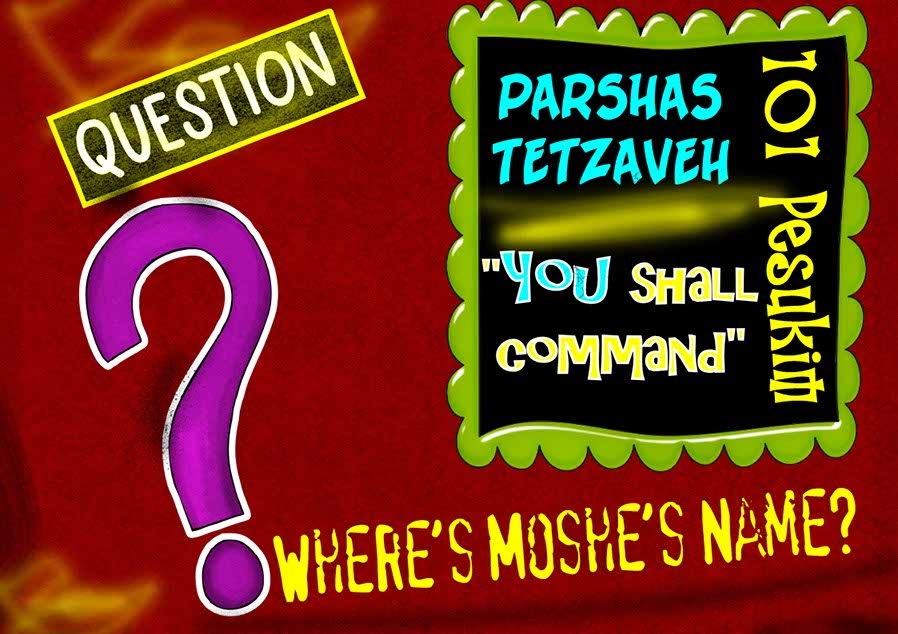
In last week’s Parsha, Parshas Terumah, we read about a marathon commandment from HaShem to his loyal servant Moshe – “Build for Me a sanctuary, a Mishkan.”
This commandment continues, in this week’s Parsha, Parshas Tetsaveh, where HaShem describes to Moshe in detail the uniforms the Kohanim would wear when they would serve in the Mishkan. The Parsha opens with HaShem’s words to Moshe, “And you shall command Bnei Yisrael…”
What’s surprising is that Moshe’s name is not mentioned even once in the entire Parsha! Nevertheless, no doubt about it, Moshe is the main character in all 101 Pesukim of Parshas Tetsaveh, and Hashem instructs Moshe time and again, “You shall do this” and “you shall do that.”
Not Quite the Same…
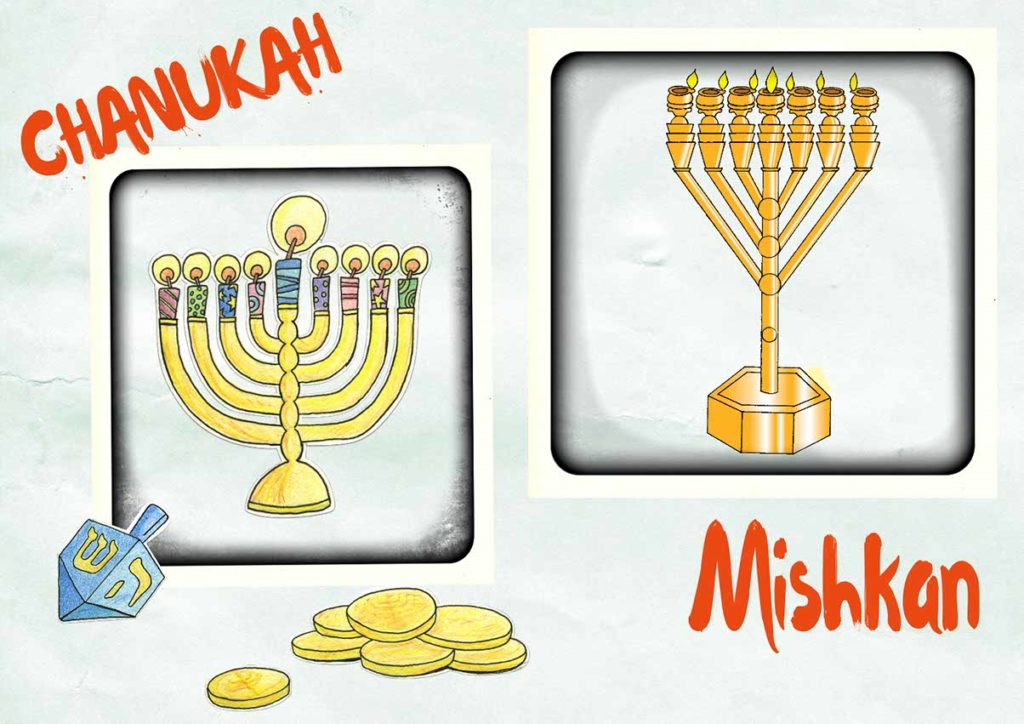
Parshas Tetsaveh opens with HaShem’s instructions to Moshe about the lighting of the Menorah in the Mishkan. This Menorah was not quite the same as the one you light nowadays on Chanukah:
A Chanukah Menorah has 8 candles (plus one Shamesh), but the Menorah in the Mishkan had a total of 7 lights, 3 on each side and one in the middle – all the same height.
As mentioned in Parshas Terumah, the Menorah was made of one solid block of pure gold, but a Chanukah Menorah can be made from any material, whether it is gold, silver or simple tin. You can even make a no-frills “Potato Menorah”! You can make a miniature size Menorah or a giant Menorah. You can also decorate it just about any way you want… just use your imagination!
But HaShem wanted the Menorah in the Mishkan to have specific measurements and shape it with the exact decorations He wanted – “Decorate the branches of the Menorah with 3 shapes: 22 cups, 11 buttons, and 9 flowers,” Hashem commanded Moshe.
In addition, a Chanukah Menorah can be lit with either candles or oil. This was not the case in the Mishkan.
Let There Be Light!
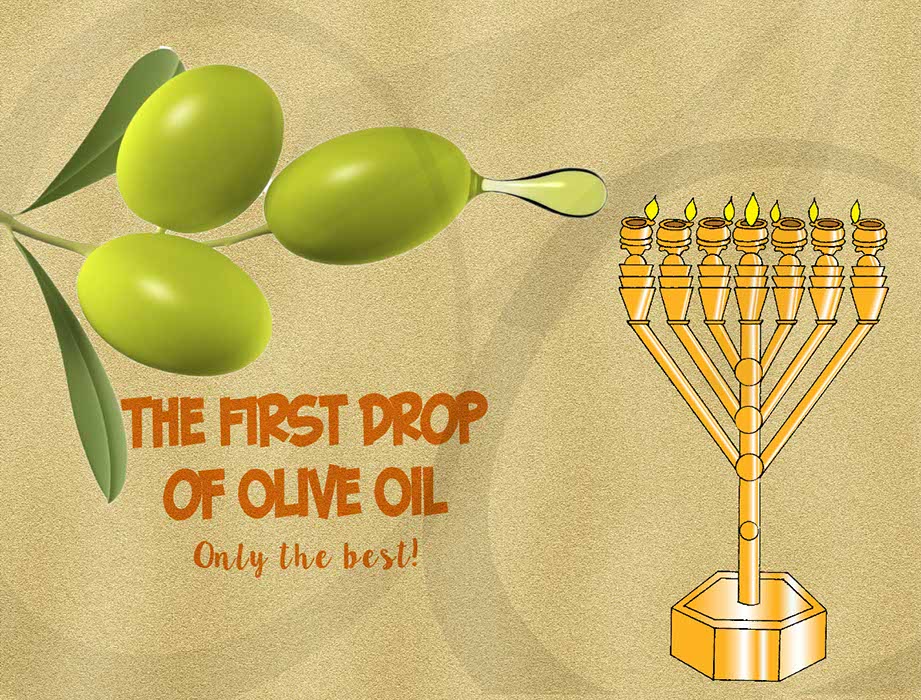
Moshe was given the task to make sure only the best oil was used for the Menorah. “You should command Bnei Yisrael,” said HaShem, “that they shall bring you the finest oil which comes from the first pressing of the olive – only the very first drop is pure enough to light My Menorah. Aharon and his children, the Kohanim, will be in charge of lighting the Menorah – “Tamid” – every single day.”
Once the pure olive oil was collected, it was the job of the Kohanim to prepare the Menorah and light it. Every morning, a Kohen would enter the Kodesh chamber of the Mishkan, where the Menorah stood, and climb the steps in front of it. He would clean out the oil cups from the previous day, replace old wicks with new ones, and pour new oil in so it should burn throughout the entire night. In the afternoon, before dark, the Kohen would light the Menorah once again. He did this every single day of the week, including Shabbos.
Ner Tamid Shazak Scenario
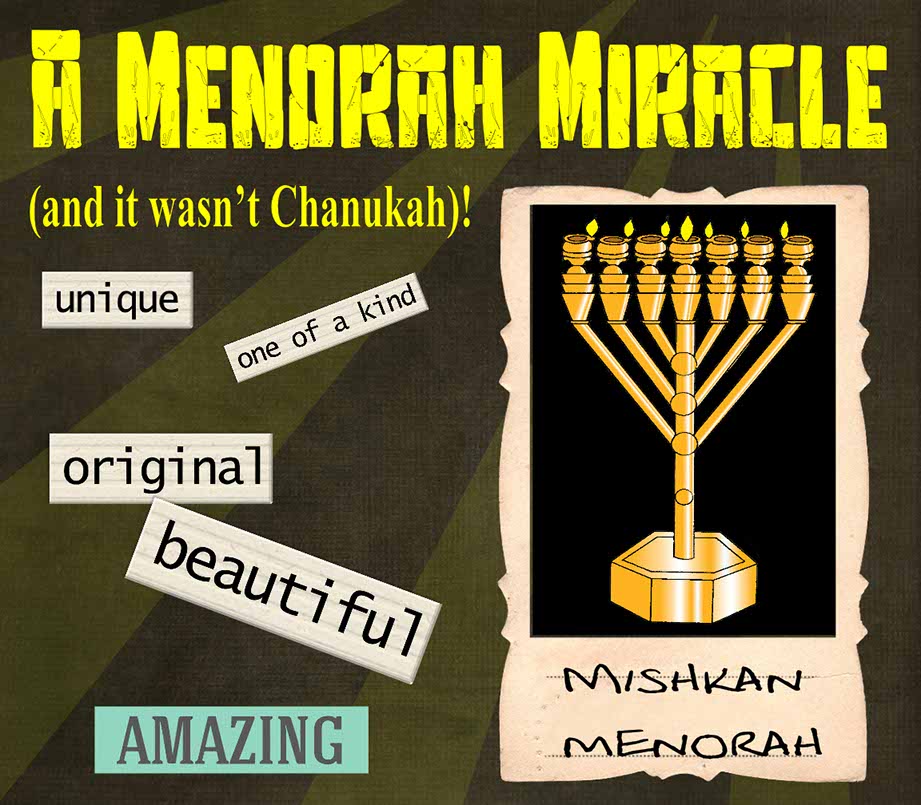
This content is for members only
Special Clothes for Special People
Have you ever noticed that people with specific jobs often wear uniforms that make them stand out in the crowd? Think about the clothes worn by policemen, firefighters, soldiers, airline pilots or doctors. Their clothes send us a clear message – these people have a special status, skill, or important task.
Similarly, the Kohanim wore distinctive clothing so that the Kohanim themselves would feel how important their jobs were, and so Bnei Yisrael would treat them with utmost respect. Truthfully, giving the proper respect to the Kohanim was a form of respect to HaShem’s special home – the holy Mishkan.
Interestingly, we have no idea about what type of clothes our forefathers, Avraham, Yitzchak and Yaakov wore. How about Yosef’s special coat given to him by his father, Yaakov? Besides the fact that it had many colors, the way it looked is a complete mystery. And how did Moshe and his wife Tzipporah dress? Once again, we have no idea.
Yet, when it came to the clothes of the Kohanim and the Kohen Gadol, HaShem elaborated and gave Moshe specific instructions, “You shall speak to the expertly skilled weavers, and have them make the clothes of the Kohanim, for dignity and splendor. Every Kohen serving in the Mishkan shall wear four special garments:
1) Kesones – a long, floor-length shirt made of white linen.
2) Avnait – a very long, multicolored belt, wound many times around the waist.
3) Michnasayim – white linen pants.
4) Migba’as – a white linen turban wrapped many times around the head, forming a point at the top.”
Extra-Special Clothes…
The Kohen Gadol wore twice as many clothes as the regular Kohanim. He wore the same Kesones, Avnait, and Michnasayim that the Kohanim wore, and a turban rounded on the top, called the Mitznefes (unlike the pointed top of the Migba’as of the regular Kohen), plus four more multi-colored garments.
Here’s a list:
1. Eifod – a colorful, woven apron, which draped down the back and tied around the waist in front. It had 28 threads made of different materials, including a thread made out of gold! The Eifod had 2 shoulder straps, each of which had a Shoham stone attached to it. The names of 6 tribes of Israel were engraved on the stone of the left shoulder strap, and the names of the other 6 tribes were engraved on the stone of the right shoulder strap.
2. Choshen Mishpat – a beautiful, woven chestplate, also made of 28 threads.
3. Me’il – a coat woven of blue wool. Hanging from the bottom hem were 72 little golden bells and 72 decorations shaped like pomegranates. The bells would jingle and make plenty of noise when the Kohen Gadol walked. This jingling reminded the Kohen Gadol and all of Bnei Yisrael how important his work in the Mishkan was.
4. Tzitz – a golden headband, which had the words “Kodesh L’HaShem” – Holy to HaShem – engraved on it. The name used for HaShem was the holy, four letter name: Yud-Hey-Vav-Hey.
Did you notice that there seems to be something missing from this list of clothing? What about special shoes for the Kohanim?
Well, there weren’t any! HaShem wanted the Kohanim to feel the holy stones of the Mishkan floor – so no shoes or socks were allowed!
Choshen Mishpat – A Flash of Light!
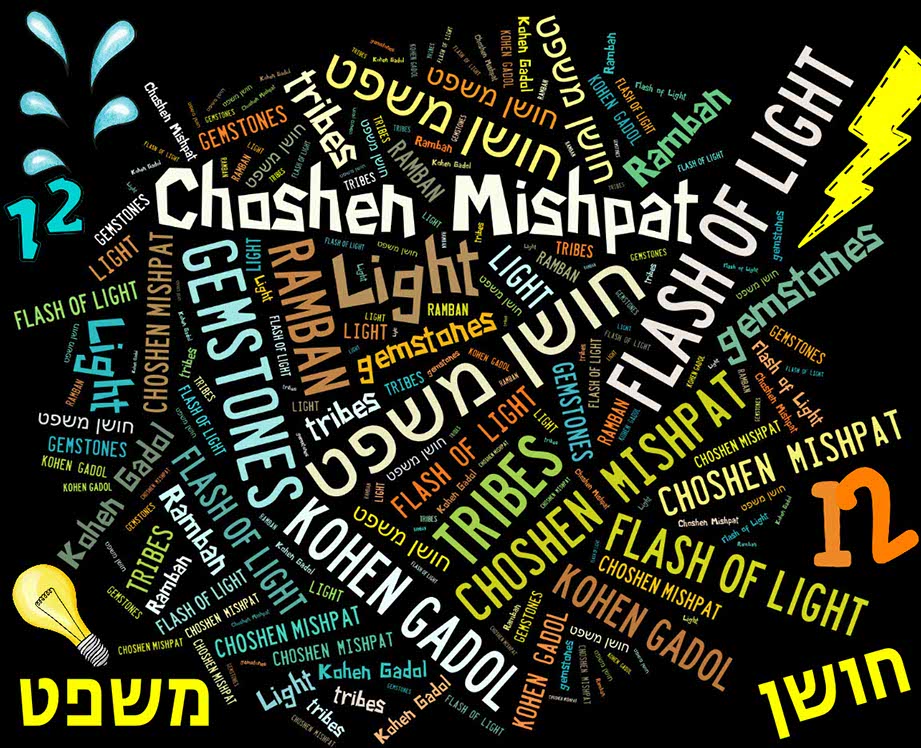
Let’s talk a bit more about the Choshen Mishpat.
This special garment was a square piece of material folded over to make a pocket, and inside it was the Urim V’tumim, a piece of parchment with HaShem’s holy name. On the front of the Choshen Mishpat were 12 gemstones, with one name of the 12 tribes engraved upon each stone.
This Choshen Mishpat functioned not only as a garment of the Kohen Gadol, but was also a miraculous “answering machine,” coming straight from HaShem!
Here’s how it worked:
Whenever there was an important question to be asked of HaShem, the question would be brought to the Kohen Gadol. The great Torah commentator, Rabbi Moshe ben Nachman, also known as the Ramban (1194-1270), gives us an example how this process worked:
When Bnei Yisrael crossed the Yarden (Jordan River), about to enter the Land of Israel, they knew that they had to conquer the land by defeating the nations occupying the land. They wanted to know which of the 12 tribes would lead the way. Pinchas was the Kohen Gadol at the time. He entered the Mishkan wearing the Choshen Mishpat and posed the question.
“Which of the 12 tribes shall be at the front line – Reuven, Shimon, Yehudah, Yisachar, Zevulun, Dan, Naftali, Gad, Asher, Menashe, Ephraim, or Binyamin?”
Immediately the answer came! The Urim V’tumim lit up certain areas of the Choshen which caused the letters י,ה,ו,ד,ה to shine. Now, Pinchas understood that the soldiers of the tribe of Yehudah had to be the first ones to go to war.
Drunk or Righteous?
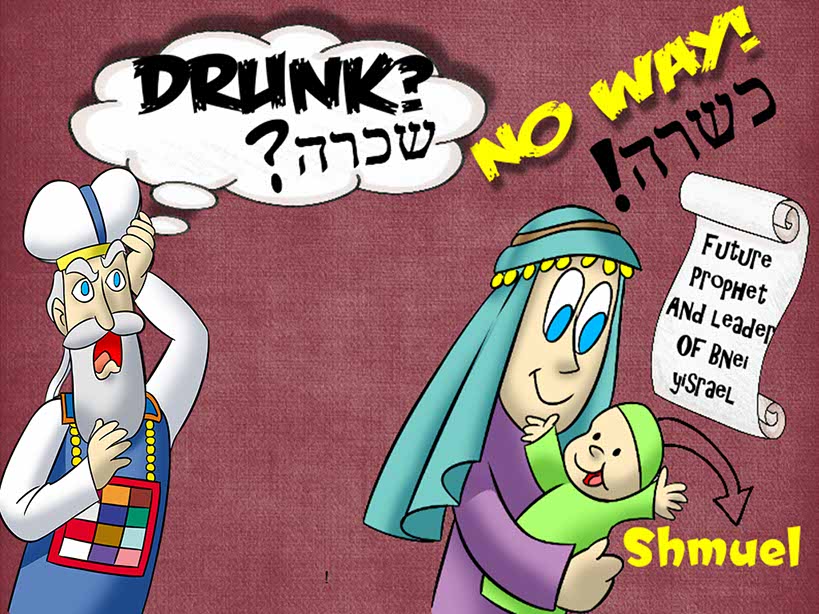
This content is for members only
Behind the Scenes with Rashi
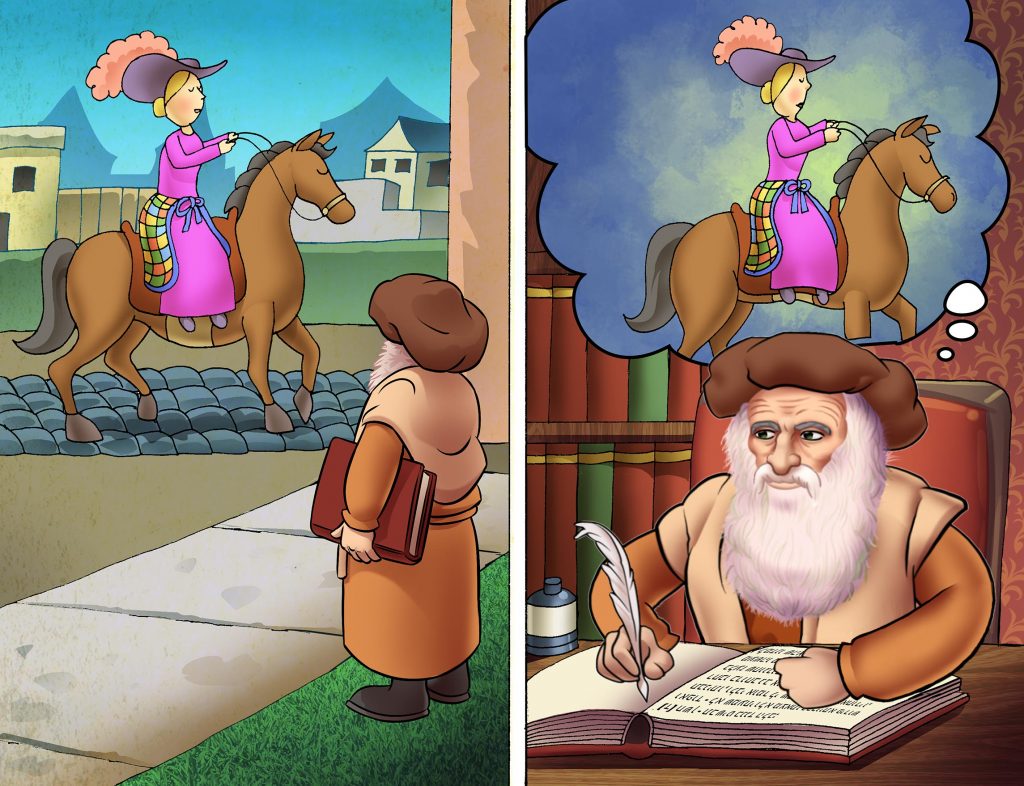
Legend has it, that one day, the great Torah commentator, Rashi (Rabbi Shlomo Yitzchaki – 1040-1105) who lived in France around a thousand years ago, noticed a noblewoman riding by on horseback and for some reason he was gazing at her clothes. Later, he was bothered by this. “Why was I paying so much attention to that noblewoman?” He couldn’t figure it out.
When Rashi came home that day, he was busy writing his commentary on Parshas Tetsaveh, about the special clothes of the Kohen Gadol. When he tried to describe the Eifod – the apron – he got stuck. He wrote, “I have not heard any explanation of its form…”
Suddenly, he remembered the noblewoman riding the horse. Aha! Now he knew. He had a feeling, deep down in his heart that the Eifod of the Kohen Gadol looked something like the riding apron worn by ladies on horseback!
These are the continuation of Rashi’s words in that Pasuk – Chapter 28 verse 4: “My heart tells me that it was something tied behind him… like an apron of sorts… which the ladies of the nobility wear while horseback riding.”
That’s why he had noticed the noblewoman – so that he could explain to the whole world exactly how the Kohen Gadol’s clothes looked!
And now you know… the rest of the story!

